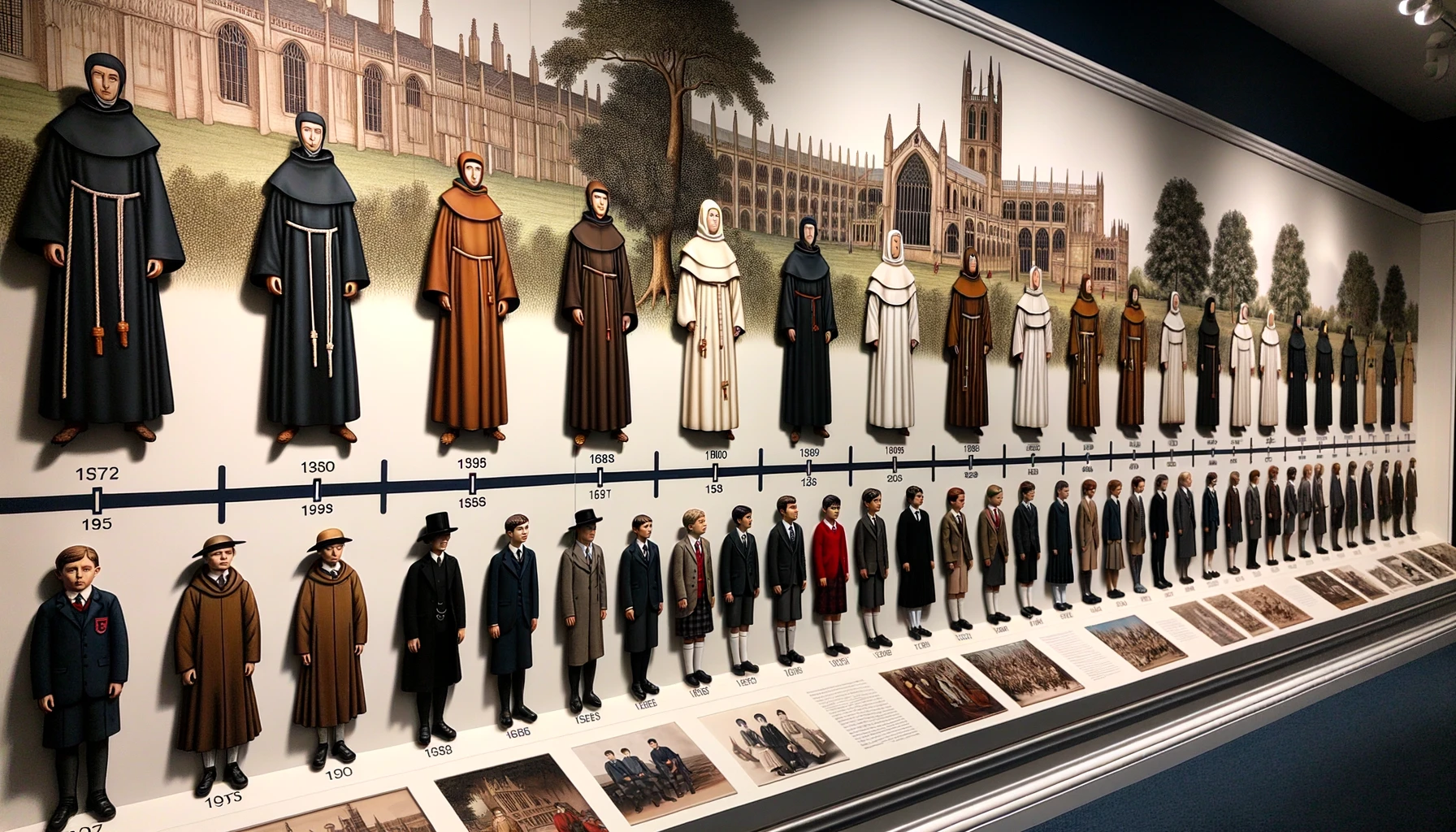Introduction Dealing with children's growth spurts can be challenging, especially when it comes to keeping…

From Monks to Modernity: The History and Evolution of School Uniforms
Stitching Together Time and Tradition
Greetings, history buffs and fashion aficionados! Have you ever wondered why the school uniform is such a universal concept? Its roots go far deeper than the cotton or polyester fibers you see today. The school uniform is not just a garment; it’s a tradition, a marker of identity, and yes, sometimes a point of contention. In this captivating journey, we will explore how school uniforms have evolved over time and what they signify in today’s educational landscape.
The Monastic Origins: Humble Beginnings
Would you believe that the concept of school uniforms dates back to the 12th century and began with monastic schools? Yep, that’s right—monks were the original trendsetters. These garments weren’t just about looking sharp; they signified devotion, humility, and a focus on scholarly pursuits. Fast forward a few centuries, and we find the concept taking root in England, eventually spreading to other parts of the world.
A British Import: The English Influence
The Brits have given the world many things: Shakespeare, the Beatles, and of course, the modern school uniform. In the 16th century, England’s Christ’s Hospital School adopted what is considered the oldest uniform. That tradition soon spread across the British Isles and influenced educational systems in other countries, especially those in the Commonwealth.
The American Adventure: A Unique Path
Across the pond, America had a unique approach to school uniforms. Initially resistant to the idea due to a culture valuing individualism, uniforms only started gaining popularity in public schools in the late 20th century. Often linked to improving discipline and academic performance, the American adaptation is an interesting case of how cultures can mold an age-old tradition.
The Global Perspective: Unity in Diversity
Today, school uniforms have been adapted in various ways across different cultures. From the “Gakuran” and “Sailor outfits” in Japan to the colorful variety in African nations, the uniform serves as a symbol of school identity, sometimes even reflecting regional and national culture. Yet, despite the diversity in design, the fundamental principle remains—uniformity and a sense of belonging.
The Fashion Evolution: Changing with the Times
As society has evolved, so have school uniforms. Long gone are the days of drab, monochromatic ensembles. Today’s uniforms often incorporate fashion elements and even designer collaborations. Some schools have also introduced variations to accommodate different weather conditions, religious obligations, or even the students’ fashion preferences.
Beyond Fabric: Symbolism and Controversy
The uniform isn’t just cloth; it’s steeped in symbolism. For some, it represents equality, reducing social distractions, and leveling the educational playing field. For others, it’s a point of contention, stifling individual expression and enforcing conformity. This dichotomy keeps the school uniform at the center of educational debates worldwide.
Modern Significance: What Lies Ahead
In today’s digital age, you might wonder, do we still need physical uniforms in a world of Zoom classes and online courses? The answer is complex. While virtual learning environments may reduce the necessity, the concept of uniformity now extends to digital platforms as well, maintaining its role as an identifier and an equalizer.
Conclusion: A Timeless Tale
So there you have it, from monk robes to modern polos, the school uniform has come a long way. It’s not just a piece of fabric; it’s a chapter in the complex book of educational history and social dynamics. As we move forward, one thing is certain: the school uniform will continue to adapt, just as it always has, reflecting the times and cultures it serves.




This Post Has 0 Comments